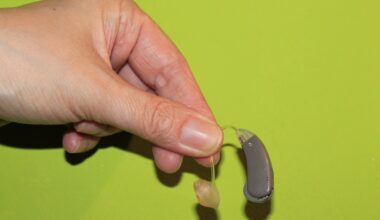Monitoring Physical Activity: An Overview
In the realm of obesity treatment, monitoring physical activity plays a vital role. Physical activity is essential for maintaining a healthy weight, improving metabolic health, and preventing obesity-related diseases. However, many individuals struggle to incorporate sufficient activity into their daily lives. Monitoring can significantly help assess an individual’s activity levels, guiding personalized treatment plans. Tools such as pedometers, mobile applications, and wearable devices can engage patients. These tools can track movements, setting goals and promoting accountability. Moreover, studies suggest that individuals who actively engage in monitoring lose more weight and keep it off. They often develop better habits based on their activity data. Effective tracking also helps healthcare professionals to interpret patterns that might inform clinical interventions. Educational workshops can improve understanding, making patients aware of the importance of regular activity. However, barriers to physical activity must be recognized, such as time limitations or mental health issues. Therefore, a multidisciplinary approach, incorporating exercise specialists, dietitians, and healthcare providers, is crucial to ensure comprehensive support for individuals struggling with obesity.
Physical activity recommendations for adults typically emphasize the importance of at least 150 minutes of moderate-intensity aerobic activity weekly. However, many obese individuals may find it challenging to achieve these goals. Therefore, it is essential to explore individualized plans that cater to their needs. Different factors like current fitness levels, physical limitations, and personal preferences should be considered while designing these plans. Starting with shorter, manageable intervals can enhance compliance with exercise. Gradually increasing the duration and intensity can lead to significant health benefits over time. Moreover, it is critical to promote enjoyable activities to sustain motivation and adherence. Group classes, outdoor activities, or even home workouts can offer variety and encourage participation. Additionally, involving family and friends could foster a supportive environment. Importantly, patients should understand that any increase in physical activity is beneficial for weight loss efforts. Even incorporating simple lifestyle changes, such as walking instead of driving or taking stairs rather than elevators, can contribute positively. Thus, personalization in the activity guidelines remains a foundational aspect of successful obesity treatment strategies.
The Role of Technology in Monitoring
Modern technology plays a significant role in monitoring physical activity. Recent advancements in wearable technology, such as smartwatches and fitness trackers, have made activity monitoring more accessible. This technology provides real-time feedback, empowering users to make informed decisions about their activity levels. Wearable devices can track steps, heart rates, and calories burned, offering comprehensive insights into physical activity patterns. Analysis of this data can help identify trends. Such trends can motivate individuals to remain active. Furthermore, mobile applications can complement wearables by providing personalized coaching, reminders, and connections to fitness communities. Moreover, research shows that individuals who monitor their activity via technology exhibit greater motivation. They also tend to experience more significant weight loss results. Virtual fitness communities can foster accountability and support, encouraging users to achieve their exercise goals. Additionally, some programs allow sharing progress with healthcare providers. Monitoring can deepen the understanding of physical activity’s role in obesity treatment. Technology can tailor interventions effectively. As a result, healthcare professionals can adapt recommended exercise regimens based on real-time data collected through these devices.
Behavioral strategies are vital for enhancing physical activity levels during obesity treatment. Setting specific and measurable goals is a fundamental start, as it helps individuals stay focused on their targets. Collaboratively developed personal goals can enhance motivation, ensuring they are relevant and achievable. Additionally, self-monitoring strategies should be integrated to promote accountability. Keeping a detailed diary of physical activity can provide insights and track progress effectively. Encouraging positive self-talk is equally essential; reinforcing the belief in oneself can boost motivation. Individuals may benefit from reward systems to reinforce progress, regardless of how small those achievements are. Support groups play a crucial role in behavioral change, providing a platform to share experiences, insights, and challenges. Social support can increase adherence to physical activity guidelines. Healthcare professionals must recognize the psychological barriers underlying inactivity. Addressing issues like fear of failure or body image concerns can significantly improve adherence to physical activity. Finally, it is crucial to emphasize resilience, encouraging individuals to persist despite setbacks. Behavioral strategies foster a sustainable relationship with physical activity, ultimately leading to successful long-term obesity management.
The Importance of Tailored Interventions
Tailoring physical activity interventions enhances the effectiveness of obesity treatment. A one-size-fits-all approach is insufficient, given the diverse needs and preferences among individuals. Personalizing interventions based on age, fitness levels, medical history, and personal goals can result in improved outcomes. For instance, an older adult may require gentler activities compared to younger individuals who might choose high-intensity workouts. Understanding the unique backgrounds of individuals can help develop programs that fit well. Furthermore, cultural factors should be taken into account. The incorporation of culturally relevant activities can enhance engagement among those from different backgrounds. For example, integrating local dance styles or team sports familiar to a community can foster enthusiasm. Moreover, healthcare professionals can adapt messages to resonate with patients’ lived experiences, improving communication and understanding. Regular follow-ups are crucial to ensure that interventions evolve alongside individual progress. Adjustments may include varying activities to prevent boredom and plateaus. By personalizing approaches, practitioners can cater more effectively to each person’s journey towards a healthy weight while fostering sustained motivation.
Community-based programs can significantly enhance physical activity levels among individuals with obesity. These initiatives provide structured support and resources that facilitate regular exercise. Such programs often emphasize social engagement, which can motivate participants to stay active together. Community centers, schools, and local fitness clubs can offer affordable access to exercise opportunities. Programs tailored to various skill levels encourage people of all abilities to join and improve their health. Furthermore, involving local stakeholders can enhance the effectiveness of community-based programs. Collaboration with healthcare providers, local businesses, and advocacy groups helps raise awareness. Incentives may be provided to increase participation, creating a sense of reward that fosters consistent involvement. Additionally, outreach efforts are essential in reaching underrepresented groups. Health education focuses on the benefits of physical activity. Empowering communities with knowledge about obesity and healthy lifestyle choices allows individuals to take ownership of their health. Public events and initiatives can demonstrate the joy of physical activity, reinforcing its importance. Through community efforts, individuals can form social networks that not only encourage accountability but enhance long-term persistence in leading healthier lifestyles.
Conclusion: The Future of Obesity Treatment
Monitoring physical activity will remain a cornerstone of effective obesity treatment in the future. As research evolves, new methods and technologies will emerge, further refining our understanding of effective interventions. Continued emphasis on personalized approaches ensures that people receive the support they need tailored to their specific circumstances. Health care providers must stay abreast of these developments to integrate emerging tools. By fostering collaborative relationships among healthcare professionals, fitness trainers, and patients, comprehensive treatment can incorporate various forms of support. Furthermore, policymakers should prioritize funding for programs that promote physical activity in communities. Investing in public health initiatives will create environments that encourage active lifestyles. Equally important is the focus on education and awareness around the impact of obesity and the role of physical activity. Empowering individuals with knowledge leads to informed decisions, ultimately enhancing their treatment journey. As society’s perspective on obesity continues to evolve, embracing diverse strategies will help tackle the complexities surrounding this epidemic. Continuous adaptation will remain crucial as we advance towards innovative solutions and fostering a culture of health for all.
Monitoring physical activity can enhance positive outcomes in obesity treatment. It acts as a motivating factor while individuals strive for healthier lifestyles. Both individuals and healthcare providers benefit from the structured approach offered through well-developed monitoring strategies. With an emphasis on evidence-based practices and community engagement, we can foster a nation that actively pursues health and well-being. Prioritizing flexibility and adaptation in approaches will be essential in navigating the unique challenges posed by obesity. By implementing these strategies, we can improve our understanding of the interplay between physical activity and obesity treatment while promoting sustainable lifestyle changes that lead to better outcomes.


